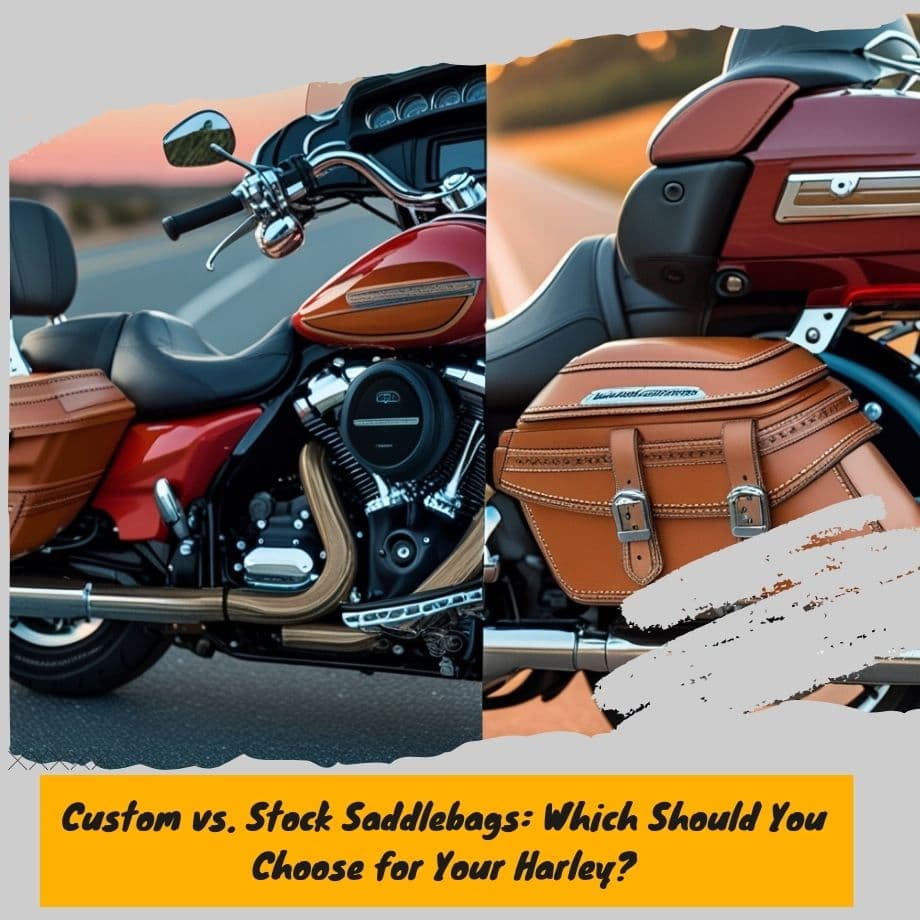Harley Rear Fender Dimensions: What You Need To Know

Harley-Davidson motorcycles are renowned for their distinctive design and styling, and one of the most iconic features is the rear fender.
More than just a functional component, the rear fender on a Harley is an essential part of the bike's overall aesthetic, contributing to its rugged and muscular appearance.
The rear fender plays a crucial role in protecting the rider from road debris, water, and mud kicked up by the rear tire. Its curvaceous shape and sleek lines complement the bike's powerful engine and sturdy frame, creating a harmonious and visually appealing silhouette.
Harley-Davidson's attention to detail in designing their rear fenders is a testament to their commitment to crafting motorcycles that are not only functional but also visually stunning.
Beyond its practical purposes, the rear fender on a Harley-Davidson motorcycle holds significant cultural and emotional value for enthusiasts. It represents the brand's rich heritage, dating back to the early days of motorcycle manufacturing when fenders were essential for riders braving unpaved roads and harsh conditions.
Today, the rear fender remains a symbol of Harley's enduring legacy, reminding riders of the brand's unwavering commitment to quality, durability, and timeless design.
Standard Rear Fender Width on Harley Models
The width of a Harley-Davidson rear fender is not a one-size-fits-all measurement. It varies across different models and styles within the iconic brand's lineup.
Generally, the rear fender width on Harley motorcycles ranges from 5 inches to 8 inches, with most models falling within the 6-inch to 7-inch range.
Table of Rear Fender Widths
| Harley Model/Factor | Rear Fender Width |
|---|---|
| General Range for Harley Models | 5 inches to 8 inches |
| Most Common Width Range | 6 inches to 7 inches |
| Classic Softail Models (Fat Boy, Heritage Classic) | Around 6.5 inches |
| Touring Models (Road King, Street Glide) | Around 7 inches |
| Sportster Line | 5 inches to 6.5 inches |
| Custom/Aftermarket Options | Variable, often wider |
| Larger Bikes (Touring/Baggers) | Wider fenders for stability and coverage |
| Cruiser Models | Slimmer fenders for streamlined look |
| Practical Considerations (Storage/Accessories) | May require wider fenders |
For instance, the classic Harley-Davidson Softail models(Customizing Softail Rear Fenders), such as the Fat Boy and Heritage Classic, typically feature rear fenders measuring around 6.5 inches in width.
On the other hand, the touring models like the Road King and Street Glide often have slightly wider rear fenders, averaging around 7 inches.
It's worth noting that even within the same model family, there can be slight variations in rear fender width due to design updates or specific trim levels.
For example, the Harley-Davidson Sportster line, known for its agile and nimble character, has rear fenders ranging from 5 inches to 6.5 inches, depending on the specific model year and variant.
Harley-Davidson's commitment to preserving the iconic styling of its motorcycles means that rear fender widths have remained relatively consistent over the years.
However, as the brand continues to evolve and introduce new models, minor adjustments to fender dimensions may occur to accommodate design changes or performance enhancements.
Factors Influencing Rear Fender Width
The width of a Harley-Davidson rear fender is influenced by several factors, each playing a crucial role in determining the overall design and functionality of the motorcycle.
Understanding these factors can provide valuable insights into the engineering and aesthetic choices made by the manufacturer.
One of the primary factors influencing rear fender width is the size of the motorcycle itself. Larger bikes, such as touring models or baggers, tend to have wider rear fenders to accommodate the increased dimensions and weight distribution.
This wider fender design not only enhances the bike's stability but also provides ample coverage for the rear tire, protecting the rider and passenger from road debris and water splashes.
It Might Be Useful: How to Remove a Harley Rear Fender
The style and design philosophy of the particular Harley-Davidson model also play a significant role in determining the rear fender width.
For instance, cruiser models often feature slimmer and more streamlined fenders, aligning with their sleek and minimalist aesthetic. Conversely, touring models prioritize comfort and practicality, leading to wider fenders that offer better protection and storage options.
Another factor to consider is the intended riding experience.
Wider rear fenders can contribute to a smoother and more comfortable ride by reducing the amount of road vibration and noise transmitted to the rider and passenger.
This is particularly important for long-distance touring or extended highway rides, where comfort becomes a paramount concern.
Additionally, the rear fender width may be influenced by design considerations related to tire clearance and suspension travel. Wider fenders provide ample space for the tire to move freely, preventing rubbing or interference during suspension compression and rebound.
This is especially crucial for bikes equipped with larger tires or modified suspension setups.
Lastly, the rear fender width can be impacted by practical considerations such as storage capacity and accessory mounting.
Some Harley-Davidson models feature integrated saddlebags or luggage racks, necessitating wider fenders to accommodate these additional components seamlessly.
Custom Fender Options and Modifications
For Harley enthusiasts seeking a more personalized look or specific functionality, a wide range of aftermarket and custom fender options are available.
Many riders opt for wider fenders to accommodate larger tires or achieve a particular aesthetic, while others prefer narrower fenders for a sleeker, more streamlined appearance.
Aftermarket fender manufacturers offer a variety of styles and sizes to cater to individual preferences.
It May Be Interesting: Sportster Rear Fender Styling
These fenders are typically crafted from high-quality materials like fiberglass, carbon fiber, or billet aluminum, ensuring durability and longevity. Wider fenders not only provide a distinctive visual appeal but also offer enhanced protection from road debris and moisture.
Additionally, custom fender shops specialize in creating one-of-a-kind fenders tailored to each rider's specifications.
These skilled artisans can sculpt fenders from raw materials, allowing for unique designs, intricate details, and precise width adjustments. Custom fenders often incorporate intricate engravings, paint schemes, or even LED lighting elements, transforming the rear fender into a true work of art.(Guide to Fitting Custom Harley Rear Fenders)
It's important to note that modifying the rear fender width may impact other aspects of the motorcycle, such as suspension geometry, tire clearance, and overall handling characteristics.
Consulting with experienced mechanics or fender specialists is recommended to ensure proper fitment and maintain optimal performance and safety.
Fender Width and Riding Experience
The width of a Harley-Davidson rear fender plays a crucial role in shaping the overall riding experience.
A wider fender can contribute to improved stability, especially at higher speeds or when carrying additional weight. The broader surface area helps to deflect wind and minimize turbulence, resulting in a smoother and more planted feel on the road.
Furthermore, a wider rear fender can enhance the bike's handling characteristics. By providing a larger contact patch with the rear tire, the fender can help distribute weight more evenly, leading to better traction and responsiveness during cornering and maneuvering.
Aesthetically, the width of the rear fender is a defining feature of a Harley's iconic look. Many riders appreciate the muscular and beefy appearance of a wider fender, which adds to the bike's overall presence and visual appeal.
Conversely, a narrower fender can give the motorcycle a sleeker and more streamlined silhouette, appealing to those who prefer a more minimalist aesthetic.
It's important to note that while a wider fender can offer benefits in terms of stability and handling, it may also slightly increase the overall weight of the motorcycle.
This can potentially impact acceleration and fuel efficiency, albeit to a minor degree. Riders should carefully consider their individual riding preferences and needs when selecting the appropriate fender width for their Harley-Davidson.
Ultimately, the width of the rear fender is a key design element that can significantly influence the riding experience, both in terms of performance and aesthetics.
Maintenance and Care for Harley Rear Fenders
Proper maintenance and care are crucial to ensure the longevity and pristine condition of your Harley-Davidson rear fender, regardless of its width. Here are some tips and best practices to keep your fender looking its best:
-
Regular Cleaning: Dirt, road debris, and grime can accumulate on the fender over time, leading to unsightly stains and potential damage. Use a gentle soap and water solution, along with a soft-bristle brush or microfiber cloth, to clean the fender regularly. Avoid harsh chemicals or abrasive cleaners that may scratch or dull the fender's surface.
-
Waxing and Polishing: Applying a high-quality wax or polish can help protect the fender's finish and enhance its shine. Follow the manufacturer's instructions carefully and use a clean, soft cloth to apply the product evenly. Waxing and polishing not only improve the fender's appearance but also provide an additional layer of protection against environmental elements.
-
Rust Prevention: Rust can be a major concern, especially for older Harley models or bikes ridden in harsh conditions. Regularly inspect the fender for any signs of rust or corrosion and address them promptly. You can use rust-inhibiting products or touch-up paints to treat affected areas and prevent further spread.
-
Dent and Scratch Repair: Minor dents and scratches can be addressed with touch-up paint or fender repair kits designed specifically for Harley-Davidson motorcycles. Follow the instructions carefully and ensure proper surface preparation for the best results.
-
Storage and Protection: When storing your Harley for an extended period, consider using a fender cover or bike cover to protect the fender from dust, moisture, and other environmental factors that could cause damage or discoloration.
-
Professional Detailing: For a more thorough cleaning and restoration, consider taking your Harley to a professional detailing service. They have the expertise and specialized tools to deep clean, polish, and protect your fender, ensuring it looks like new.
Remember, proper maintenance and care not only enhance the appearance of your Harley's rear fender but also contribute to the overall longevity and value of your motorcycle.
Historical Perspective on Fender Design
Harley-Davidson's rear fender design has evolved significantly over the decades, reflecting changing styling trends, technological advancements, and rider preferences.
In the early days of motorcycle manufacturing, fenders were primarily functional, designed to protect riders from road debris and moisture. However, as Harley-Davidson established itself as an iconic American brand, fender design became an integral part of the company's signature style.
The iconic Harley-Davidson fenders of the 1940s and 1950s were characterized by their wide, sweeping lines and generous proportions.
These fenders not only provided ample coverage but also contributed to the distinctive, muscular aesthetic that Harley-Davidson motorcycles became known for. The rear fenders of this era were often adorned with intricate chrome accents and emblems, adding to the bikes' visual appeal.
As the motorcycle industry evolved, Harley-Davidson embraced more streamlined and minimalist designs in the 1960s and 1970s.
Rear fenders became narrower and more compact, reflecting the influence of European and Japanese motorcycle styles. This period also saw the introduction of innovative materials like fiberglass and plastic, which allowed for greater design flexibility and weight reduction.
In recent decades, Harley-Davidson has struck a balance between honoring its heritage and embracing modern design sensibilities.
Contemporary rear fenders often feature a combination of classic lines and contemporary materials, catering to riders who appreciate both nostalgia and cutting-edge engineering.
Additionally, the rise of custom culture has led to a proliferation of aftermarket fender options, allowing riders to personalize their bikes to an unprecedented degree.
Throughout its history, Harley-Davidson's rear fender design has been a canvas for artistic expression, reflecting the brand's commitment to craftsmanship and individuality.
From the iconic sweeping lines of the past to the sleek, modern interpretations of today, the rear fender remains an integral part of the Harley-Davidson experience, seamlessly blending form and function.
Rear Fender Width and Regulations
When it comes to rear fender width on Harley-Davidson motorcycles, there are certain regulations and guidelines that must be considered. These regulations are in place to ensure the safety and legality of the motorcycle on public roads.
One of the primary concerns regarding rear fender width is the ability to provide adequate coverage for the rear tire. Fenders serve the important function of preventing debris, water, and other materials from being kicked up by the rear tire and potentially hitting the rider or other vehicles.
As such, most states and jurisdictions have regulations that require a minimum fender width to ensure proper coverage of the tire.
In addition to tire coverage, rear fender width can also impact the overall width of the motorcycle. Many areas have restrictions on the maximum allowable width for vehicles on public roads, and exceeding these limits could result in fines or other penalties.
Harley-Davidson, as well as other motorcycle manufacturers, must design their fenders to comply with these regulations.
Another consideration is the impact of rear fender width on visibility and safety. Excessively wide fenders can potentially obscure the rider's view or create blind spots, which could increase the risk of accidents.
As a result, some regulations may limit the maximum width of rear fenders to maintain adequate visibility for the rider.
It's important to note that regulations regarding rear fender width can vary from state to state or even between different municipalities.
Harley-Davidson enthusiasts who plan to modify or customize their rear fenders should always research and comply with the specific regulations in their area to ensure their motorcycle remains legal and safe for operation on public roads.
Rear Fender Width and Bike Customization
For many Harley enthusiasts, customizing their bike is an integral part of the experience. The rear fender plays a crucial role in the overall aesthetic and personalization of a Harley-Davidson motorcycle. Its width can significantly impact the bike's appearance, making it a prime target for modifications and customizations.
One of the most common reasons for altering the rear fender width is to achieve a specific look or style.
You May Also Like: Popular Bobber Rear Fender Styles
Wider fenders often lend a more muscular and aggressive appearance, while narrower fenders can create a sleeker and more streamlined silhouette. This allows riders to tailor their bike's visual appeal to their personal preferences and riding style.
Customizing the rear fender width can also be a practical consideration. For instance, some riders may opt for a narrower fender to accommodate larger tires or to improve ground clearance, particularly for those who enjoy off-road adventures or touring on rugged terrain.
Conversely, wider fenders can provide better coverage and protection from road debris and water splashes, making them a popular choice for long-distance touring or riding in inclement weather conditions.
Beyond aesthetics and functionality, rear fender customization is often seen as a form of self-expression for Harley enthusiasts. By modifying the fender's width, riders can create a truly unique and personalized bike that reflects their individuality and creativity.
This aspect of customization has become an integral part of the Harley-Davidson culture, where riders take pride in making their bikes stand out from the crowd.
Whether it's through the installation of aftermarket fenders, trimming or stretching the existing fender, or even fabricating a custom-made piece, the possibilities for rear fender customization are virtually endless.
Many Harley enthusiasts collaborate with skilled mechanics, fabricators, or even undertake the modifications themselves, further enhancing the sense of ownership and personal connection with their beloved machines.
Expert Insights and Recommendations
When it comes to the width of a Harley-Davidson rear fender, there is no one-size-fits-all answer. Every rider has their own preferences and considerations based on their riding style, bike customization goals, and personal taste.
To provide some expert insights and recommendations, we reached out to several Harley enthusiasts and industry professionals.
According to John, a seasoned Harley mechanic,
"The rear fender width can greatly impact the overall look and feel of your bike. Wider fenders tend to give a more robust and muscular appearance, while narrower fenders can create a sleeker, more streamlined silhouette. It really comes down to personal preference and the desired aesthetic."
Sarah, an avid Harley rider and customizer, shared her perspective:
"I prefer a wider rear fender on my Harley because it provides better coverage and protection from road debris and water spray. However, some riders find that wider fenders can limit ground clearance and maneuverability, so it's important to strike a balance."
Mike, a Harley dealership owner, emphasized the importance of considering the bike's intended use:
"For touring and long-distance riding, a wider rear fender can offer more protection and comfort. But for sportier rides or tight urban maneuvering, a narrower fender might be more suitable."
Overall, the experts recommend considering factors such as riding style, bike customization goals, and personal preferences when choosing the right rear fender width for your Harley.
It's also advisable to consult with experienced mechanics or customizers to ensure proper fitment and compatibility with your specific bike model.







Leave a comment